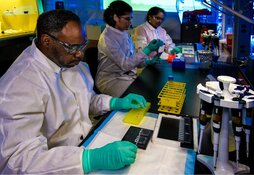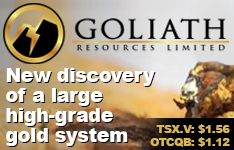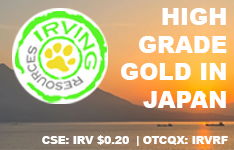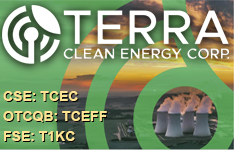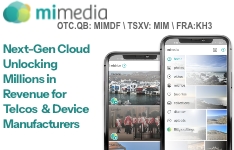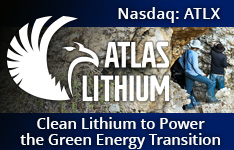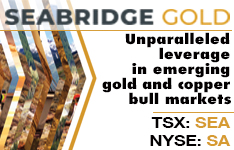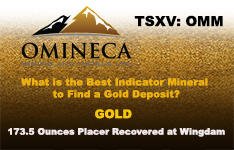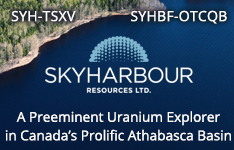Capricor Therapeutics Inc. (CAPR:NASDAQ) announced that it has reached alignment with the U.S. Food and Drug Administration (FDA) on key regulatory components for its Biologics License Application (BLA) for Deramiocel, the company's investigational cell therapy for Duchenne muscular dystrophy (DMD). The update follows a Type A meeting held after the FDA issued a Complete Response Letter (CRL) in July 2025.
During the meeting, the FDA confirmed that the recently completed HOPE-3 pivotal trial may serve as the "additional study" referenced in the CRL. The FDA also agreed to allow Capricor to submit the HOPE-3 data within the current BLA framework. The agreed-upon endpoints include the Performance of the Upper Limb version 2.0 (PUL v2.0) as the primary efficacy endpoint, with left ventricular ejection fraction (LVEF) as a key secondary measure.
Capricor stated it will prepare a formal resubmission of its BLA, incorporating data from HOPE-3. In a statement included in the meeting minutes, the FDA noted: "The FDA remains committed to collaborating with the applicant and will exercise further regulatory flexibility by reviewing data from the HOPE-3 trial."
Deramiocel, also known as CAP-1002, is composed of allogeneic cardiosphere-derived cells (CDCs) and has been evaluated across multiple clinical studies. Capricor previously submitted the original BLA with supporting data from its HOPE-2 and HOPE-2 Open Label Extension (OLE) trials. According to the company, those studies demonstrated improvements in both skeletal and cardiac muscle function. The agency had identified no significant issues during mid-cycle review or pre-licensing inspections, and Capricor has addressed chemistry, manufacturing, and controls (CMC) items cited in the CRL.
"We are encouraged by the outcome of our discussions with the FDA, which provided clarity on our regulatory strategy and reinforced the opportunity to deliver HOPE-3 data as the basis for approval, should it meet regulatory requirements," said Linda Marbán, Ph.D., Capricor's Chief Executive Officer.
Capricor confirmed that it maintains sufficient financial resources to support the regulatory advancement of Deramiocel. The company ended September 2024 with US$165 million in pro forma cash, which includes proceeds from its October 2024 equity offering.
Advancements in Cell and Gene Therapy for Rare Diseases
Cell and gene therapy continued to serve a pivotal role in the treatment of rare diseases throughout 2025, with regulatory developments, clinical milestones, and market expansion shaping the sector.
According to a September 30 report by DataM Intelligence, the global gene therapy market for rare diseases reached a valuation of US$3.01 billion in 2024 and was projected to grow to US$24.54 billion by 2033, driven by a compound annual growth rate of 26.5%. The report highlighted that this growth was fueled by "biotech innovation and rare disease research," alongside the increasing use of viral and non-viral vectors for in-vivo and ex-vivo applications.
Oppenheimer & Co. analysts Leland Gershell, MD, PhD, and Rohan Mathur maintained an Outperform rating on Capricor Therapeutics with a price target of US$22.00.
Global regulators continued to support the advancement of these therapies. On July 24, the European Commission granted marketing authorization to obecabtagene autoleucel for adults with relapsed or refractory B-cell precursor acute lymphoblastic leukemia.
The approval was based on the FELIX trial, which reported a 76.6% complete response or incomplete hematological recovery rate in the pivotal cohort. The median duration of response reached 21.2 months.
In addition to regulatory and clinical progress, experts stressed the importance of health system readiness. In a September 24 interview with the American Journal of Managed Care, David Mitchell, PharmD, MBA, emphasized that health systems were well-positioned to manage the complexities of rare disease therapies, especially cell and gene treatments.
"Because of our experience in health systems and the fact that we've evolved alongside these therapies, we have teams who understand them," Mitchell explained. He highlighted pharmacy teams' roles in identifying eligible patients, navigating insurance authorizations, and coordinating financial assistance.
He also pointed to the need for informatics support, saying, "Our pharmacy personnel have developed strong expertise in health care informatics. Having everything documented in the EMR and being able to use that data to identify, monitor, and track patients is critical."
Analyst Coverage Highlights Positive Outlook for Capricor
On September 11, Roth Capital Partners maintained a Buy rating and US$12.00 price target on Capricor Therapeutics following its response to a Complete Response Letter (CRL) from the FDA. According to analyst Boobalan Pachaiyappan, Capricor pushed back on the agency’s conclusion that HOPE-2 failed to demonstrate efficacy, citing statistically significant results on the primary endpoint using a pre-specified model and favorable cardiac data on 21 of 22 measures.
The firm noted that the Type A meeting had occurred and that minutes were expected by late September. Roth emphasized the importance of HOPE-3 trial data, anticipated in Q4 2025, in shaping the regulatory path forward. Capricor’s US$122.8 million cash position was expected to fund operations beyond 2026.
Roth’s discounted cash flow model assumed a 55% probability of approval, a U.S. launch in late 2026, and yielded a US$531.5 million valuation. The firm concluded that “positive HOPE-3 results demonstrating clinically meaningful LVEF improvements might ultimately favor CAPR, provided the FDA recognizes this endpoint.”
On September 26, Oppenheimer & Co. analysts Leland Gershell, MD, PhD, and Rohan Mathur maintained an Outperform rating on Capricor Therapeutics with a price target of US$22.00. At the time of their report, the target reflected an estimated 237% upside from the share price of US$6.52. The analysts described Capricor's recent regulatory progress as "a positive step toward deramiocel's potential approval for Duchenne muscular dystrophy."
The report noted that 70% of patients enrolled in the company's Phase 3 HOPE-3 trial had clinical cardiomyopathy, a factor that Oppenheimer believed "should allow deramiocel's cardioprotective benefits to be detected." Gershell added that "provided LVEF benefit is sufficient, management believes regulatory flexibility could permit approval even if the PUL 2.0 primary is missed." The company began processing its HOPE-3 trial data and planned to submit the statistical analysis plan imminently, with topline data expected in November.
In terms of financials, the firm recorded US$22.3 million in revenue in 2024 and projected no revenue in 2025 or 2026. However, the analysts anticipated commercial revenue growth beginning in 2027, estimating US$54.7 million in 2027, US$147.5 million in 2028, and US$300.4 million in 2029. These forecasts were based on projected milestones and royalty income from the company's partnership with NS Pharma.
Oppenheimer projected that Capricor's share of U.S. sales for deramiocel would total approximately US$332 million by 2030. They expected royalty revenue to continue through 2035, modeling risk-unadjusted net royalties of US$295 million in 2029. The analysts also pointed to potential catalysts in late 2025 and early 2026, including topline HOPE-3 data, progress on a commercial agreement for the European Union, and expansion efforts into Becker muscular dystrophy.
James Molloy of Alliance Global Partners reiterated the Buy rating on Capricor Therapeutics and maintained a US$16.00 price target.
In addition to deramiocel, Oppenheimer highlighted Capricor's exosome platform as "a cell-free platform with broad therapeutic and vaccine potential that could generate lucrative industry deals over time."
Valuation was based on a risk-adjusted discounted cash flow model using a 12% discount rate applied to all cash flows through 2035, excluding a terminal value. The analysts stated that they "believe CAPR's <US$200M EV makes shares attractive into upcoming news flow." At the time of publication, Capricor had a market capitalization of approximately US$298.1 million and 45.7 million shares outstanding.
On September 26, James Molloy of Alliance Global Partners reiterated the Buy rating on Capricor Therapeutics and maintained a US$16.00 price target following the release of the FDA’s Type A meeting minutes. According to AGP, the agency provided “a clear path to approval for Deramiocel,” supporting the inclusion of data from the HOPE-3 trial in a major amendment to the company’s original Biologics License Application. This amendment would not require a new submission, potentially accelerating the approval timeline.
AGP emphasized that the HOPE-3 trial had completed data collection, with unblinding and analysis expected imminently. Analysts also noted that the trial would maintain PUL 2.0 as the primary endpoint, with LVEF as a key secondary measure. They cited management’s belief that all previously cited manufacturing issues had been addressed and that the company had passed its pre-license inspection.
AGP projected that Capricor had sufficient capital to reach potential launch, with approximately US$120 million in cash, and described the company’s regulatory position as strong. The US$16.00 price target reflected a sum-of-the-parts model based on projected royalties, a potential Priority Review Voucher, and future milestones.
The analysts concluded, “Guidance from the agency is a positive in our view,” and reaffirmed expectations for a potential approval decision in late Q1 or early Q2 of 2026.
Next Phases in Deramiocel's Clinical Journey
Capricor's Deramiocel program is advancing through late-stage regulatory review with a key milestone on the horizon. The company's BLA for Deramiocel was accepted for review by the FDA in March 2025, and the application was granted priority review with a target Prescription Drug User Fee Act (PDUFA) action date of August 31, 2025.
The HOPE-3 clinical trial, which completed enrollment of 105 participants across two cohorts, is designed to evaluate both skeletal and cardiac endpoints. With topline results expected in mid-Q4 2025, the trial is positioned to support Capricor's planned resubmission and could also contribute to potential label expansion. Capricor has indicated its intention to use HOPE-3 as a post-approval confirmatory study.
Capricor continues to hold several regulatory designations for Deramiocel, including Orphan Drug, Regenerative Medicine Advanced Therapy (RMAT), and Rare Pediatric Disease designations. If approved, the product could qualify the company for a Priority Review Voucher.
 Streetwise Ownership Overview*
Streetwise Ownership Overview*
Capricor Therapeutics Inc. (CAPR:NASDAQ)
Manufacturing for Deramiocel is handled at Capricor's in-house facility in San Diego. The therapy's development and potential commercialization in the U.S. is supported through an exclusive partnership with Nippon Shinyaku, which includes milestone payments and revenue-sharing provisions of up to US$695 million for the U.S. territory.
Capricor has also reported favorable safety and efficacy data from its HOPE-2 Phase 2 study, with statistically significant improvements in both cardiac function and upper limb mobility. Long-term data from the HOPE-2 OLE study demonstrated sustained benefit over three years in both skeletal and cardiac metrics compared to external natural history controls.
With HOPE-3 now complete and the resubmission process underway, Capricor's Deramiocel program remains one of the few late-stage cell therapy programs in DMD with multiple regulatory designations and ongoing regulatory engagement.
Ownership and Share Structure
According to Refinitiv, 15.51% of Capricor Therapeutics is held by strategic entity, Nippon Shinyaku Co. 1.28% is management and insiders. Institutions hold 30.51% with BlackRock Institutional Trust holding the most at 5.96%, followed by The Vanguard Group at 5.02%, and State Street Global Advisors with 3.21%. The rest is retail.
Capricor currently has a market capitalization of US$329.62 million. It has 45.72 million outstanding shares, 38.04 million free float shares, and a 52 week range of US$$5.68 to US$23.40.
| Want to be the first to know about interesting Biotechnology / Pharmaceuticals investment ideas? Sign up to receive the FREE Streetwise Reports' newsletter. | Subscribe |
Important Disclosures:
- James Guttman wrote this article for Streetwise Reports LLC and provides services to Streetwise Reports as an employee.
- This article does not constitute investment advice and is not a solicitation for any investment. Streetwise Reports does not render general or specific investment advice and the information on Streetwise Reports should not be considered a recommendation to buy or sell any security. Each reader is encouraged to consult with his or her personal financial adviser and perform their own comprehensive investment research. By opening this page, each reader accepts and agrees to Streetwise Reports' terms of use and full legal disclaimer. Streetwise Reports does not endorse or recommend the business, products, services or securities of any company.
- This article does not constitute medical advice. Officers, employees and contributors to Streetwise Reports are not licensed medical professionals. Readers should always contact their healthcare professionals for medical advice.
For additional disclosures, please click here.


